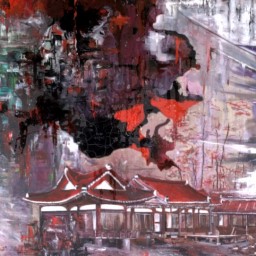Gyeongsoo Lim
Homebush Boys High School
KOREAN CULTURE: REFLECTIONS ON IDENTITY
Collection of Work
Acrylic and oil on canvas, sugar lift prints
Korean Culture: Reflections on Identity is a body of work inspired by my life as an Australian youth immersed in Australian traditions while simultaneously exploring memories, issues and traditions of my Korean culture. By including intimate details and atmospheres that convey cherished memories of my life in Korea, it represents my cultural connection to Korea and the Korean landscape and culture, highlighting its importance in my life. By experimenting with different media and painting techniques the work gradually became more layered. In making this work I discovered my cultural roots and deepened my love for my Korean heritage and landscape.
My artmaking practice has been influenced by the study and interpretation of the following artists: JMW Turner; Pablo Picasso, landscapes; Robert Boynes; Zhou Jirong.
Marker's Commentary
This dynamic and impactful series of paintings and prints explore the erosion of Korean identity through the frame of traditional and contemporary architectural spaces found in their birthplace. The paintings show remnants of culture still accessible despite forces erasing them. The abstract etchings hint at a colourless world with the complete annihilation of connection to their society. The personal is removed as these ideas speak to the audience as universal truths in the world of globalisation.
The realistic renderings of underlying scenes in the paintings are partially obliterated with the deliberate, violent application of large areas of poured paint. Colour is present reflecting life and society somewhat intact and alive within. Colour choices are reflective of traditions and the vibrancy of the relationship. A grunge aesthetic, with confident, smeared and manipulated paint and drip marks, is utilised to evoke strong emotions in response to the issue explored. The etchings have employed a range of material techniques in an intuitive and abstract way to create a continuous visual disturbance and obliterate any link with images of the Korean culture. Along with the black and white palette the finality of the loss of connection is intensified.

